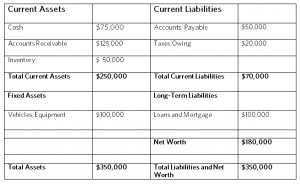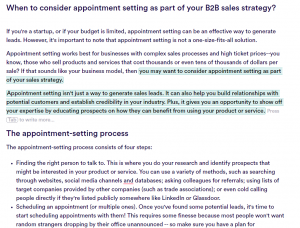Today’s increasingly complex and diverse marketspace calls for sales organizations to look for new and creative approaches to improve sales execution strategies and advancing revenue growth. One particular step towards is a surprisingly simple way to impact sales performance: improving the output of your middle sales performers.
But will improving the middle’s performance make a real and quantifiable difference? Let’s investigate…

Here’s a point of context: A new crop of savvy and well informed buyers lead most sales processes. They’re armed with a plethora of knowledge and data, and are already half way through their buying journey before ever speaking to a sales person. However, most sales organizations today are still internally focused and have failed to keep pace with these buyers. Simply put, while buyers are two steps ahead, sales reps are two steps behind – presenting the buyer with a grand total of zero new and insightful information.
And here’s another tidbit: 60 percent of deals end in no decision – mainly because sales did not effectively communicate value. It’s common with most sales organizations to have a definitive set of performing groups – with the average represented by the 20/60/20 rule. The top 20 percent will be top performers that often meet or exceed quota, the middle represents the 60 percent that are often on or just shy of meeting quota, and the bottom 20 percent are usually far below quota attainment. And regardless of such other variables as company size, the middle 60 percent will always represent the majority of any company’s sales revenues, and offer the greatest potential for increasing sales. However, many organizations focus on the top 20 percent and reward top performers for the obvious reasons. Well, what if you could improve the selling performance of your middle by just a small amount? What would that do for your organization’s total sales performance?
Moving the needle when it comes to increasing quota attainment across your sales organization remains a daunting challenge. In reality, only 57% of quota-carrying salespeople make or exceed their quota. That means 43% are not delivering revenue performance as planned. When seeking to increase sales and overall quota attainment across your entire sales organization, it’s less effective to focus on your top performers than it is to engage your middle performers.

Consider this example – a simple five percent gain in the middle 60 percent of your sales performers can deliver over 91 percent greater sales than a five percent shift in your top 20 percent. In this instance, let’s say we have a sales force of just 60 sales professionals, each with a $ 2 million quota – the numbers add up substantially. A performance improvement of the middle performers by just 5 percent can be close to double in return, compared to the same impact on top performers. This example illustrates a compelling business impact – even with 30 sales people, let alone 3,000. Equally important, a 20 percent improvement in low performers does not even come close to the business impact of improving the middle.
Now for the big ask: How can you make your middle perform better?
First thing first: Understand your middle. Don’t believe that middle performers are not motivated. The typical misconception is that the middle lack the drive to be top performers. The fact is, this group is competent and capable; many are former top performers, but perhaps have stepped back for a variety of life-related reasons. For some who are newer in their roles, they simply may not yet have developed the instincts, skills, and necessary experience required to focus their efforts on high value activities.
This larger and diverse group has enormous potential, and sales leaders need to be clear on which type of middle performers they have to accurately set the stage for behavioral change. The age range of this group can vary, but often split between more experienced who welcome feedback and coaching, and those that might be less experienced but are hungry to learn and advance their careers. Recognizing these demographics and the dynamic nature of each group will help to prioritize initiatives to better support them.
Second, it’s not just motivation. It’s not just incentives, and recognition. It is about how to capture what works in your industry, with your offering, and your buyers, and replicating best practices for this group. Ask yourself: What are the situational selling scenarios that can be captured, documented, and served up directly in the selling process? What are the resources that work best in each selling situation? Overall, this group plays an integral role in supporting a company’s culture and they can bring substantial business value when properly developed, managed and influenced. And while it’s likely that a few middle performers simply do not have any more to give, most of them have an unrecognized potential.
Getting more out of the middle requires a fundamental shift in mindset, with a focus on agility and alignment, in order to help middle performers take the necessary steps to become better performers. What the middle needs is not just incentives, but targeted and daily guidance. But there’s also plenty more…
Business & Finance Articles on Business 2 Community
(400)








